Today’s Current Affairs: 17th October 2024 for UPSC IAS exams, State PSC exams, SSC CGL, State SSC, RRB, Railways, Banking Exam & IBPS, etc
Table of Contents
Hellfire Missile:
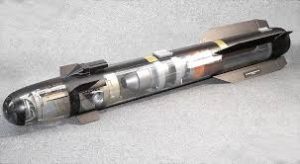
India recently concluded a deal with the US for the procurement of 170 AGM-114R Hellfire missiles.
- The AGM-114 Hellfire missile is one of the most popular short-range air-to-ground (sometimes air-to-air) laser-guided, subsonic tactical missiles used by the United States military as well as 30 US allies.
- The United States began developing the AGM-114 Hellfire in 1972 to address the Army’s requirement for a helicopter-launched antitank missile to counter Soviet armor formations.
- The missile is used to target armored vehicles, including tanks, bunkers, radar systems and antennas, communications equipment, soft targets, or hovering helicopters.
- It is the missile of choice for several kinds of Unmanned Aerial Vehicles (UAVs), such as the MQ-1B Predator, MQ-9 Reaper, and MQ-1C Grey Eagle
- It has a length of 1.62 m, a diameter of 17.7 cm and a wingspan of 0.71 m.
- Each Hellfire weighs 45.4 kg-49 kg including an 8 kg-9 kg multipurpose warhead.
- It is propelled by a single-stage solid-propellant solid-fuel rocket motor.
- The missile has a maximum velocity of 950 mph.
- It can be launched from several different kinds of fixed-wing aircraft and helicopters, surface ships, and military ground vehicles.
- It uses a semi-active laser guidance system and an integrated blast fragmentation sleeve warhead to engage targets that previously needed several Hellfire variants to destroy.
Doctrine of Lis Pendens:
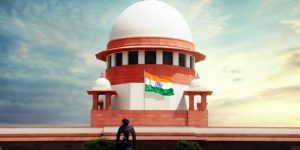
The Supreme Court has reiterated that once a transaction is found to be hit by the doctrine of lis pendens, then the defences of being a bona fide purchaser and lack of notice regarding the sale agreement are not available.
- Lis pendens in common parlance means “a pending legal action”.
- The maxim representing this doctrine means that ‘during the pendency of litigation, nothing new should be introduced, and to maintain the status quo, to abstain from doing anything which may affect any party to the litigation.
- It is based on the principle that during the pendency of a suit, the subject matter of it (i.e. the property in the suit) should not be transferred to a third party.
- It is dealt with in Section 52 of the Transfer of Property Act, 1882, which provides that if there is any transfer of any immovable property pending litigation, the same shall not affect the rights of the parties in respect to the immovable property.
- The outcome of the litigation, passed by a court of competent jurisdiction, in the matter during the pendency of which the transfer had taken place would be binding upon such a purchaser, who has purchased the property during the pending litigation.
- It serves to protect the rights and interests of parties involved in a pending law suit concerning a specific property.
- The effect of the rule of lis pendens is not to invalidate or avoid the transfer but to make it subject to the result of the litigation.
- According to this rule, therefore, whosoever purchases property during the pendency of a suit is bound by the judgment that may be made against the person from whom he derived the title, even though such a purchaser was not a party to the action or had no notice of the pending litigation.
Roopkund Lake : Shrinking
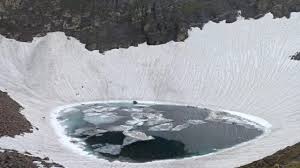
Climate change is affecting Roopkund Lake in Uttarakhand, causing it to shrink annually.
- Roopkund, also known as the ” lake of skeletons” is a glacial lake in Uttarakhand.
- It is situated at 16,500 feet above sea level at the base of Mt. Trishul in the Garhwal Himalayas.
- Measuring a mere 130 feet in width, the lake is encased in ice for the majority of the year.
- It is surrounded by snow-capped peaks and lush green meadows.
- It is called the “lake of skeletons” as the glacial body conceals numbers of human skeletons, some with preserved flesh.
- These skeletons become visible when snow melts in the region.
- These skeletal remains, dating back to around the 9th century AD, have led to various theories about the cause of death.
- A 2019 study by scientists from India, the US, and Germany challenged the belief that the skeletons belonged to a single group that perished in a single event, instead suggesting they were genetically diverse individuals who died over a span of up to 1,000 years.
World Food Day 2024:

World Food Day is celebrated annually on October 16 across the globe to honour the establishment of the Food and Agriculture Organisation (FAO).
- Food and Agriculture Organisation (FAO) is a specialized agency of the United Nations (UN) that leads international efforts to defeat hunger.
- It is the oldest permanent specialized agency of the UN, established in October 1945.
- Mandate to improve nutrition, increase agricultural productivity, raise the standard of living in rural populations, and contribute to global economic growth.
- The FAO coordinates the efforts of governments and technical agencies in programs for developing agriculture, forestry, fisheries, and land and water resources.
- Headquarters: Rome, Italy.
- It currently has 194 Member States plus the European Union (member organization).
Hibakusha:

Nihon Hidankyo, the organisation that worked for the welfare of the survivors of the 1945 bombings of Hiroshima and Nagasaki—called the hibakusha—has been awarded the Nobel Peace Prize for 2024.
- Hibakusha is the Japanese word for survivors of the 1945 atomic bomb attacks on Hiroshima and Nagasaki.
- On August 6, 1945, the United States dropped the Little Boy atomic bomb on Hiroshima, Japan.
- Three days later, the US dropped a second atomic bomb, known as Fat Man, on Nagasaki, Japan.
- By the end of 1945, more than 200,000 people died as a direct result of these bombings.
- Many thousands of people survived with injuries from the attacks. They came to be known as hibakusha, which translates to bomb-affected people.
- Niju hibakusha, double survivors, applies to more than 160 people who were present at both Hiroshima and Nagasaki.
- Currently, the combined number of ‘hibakusha’ who are alive is officially 1,06,825, according to Japan’s Ministry of Health, Labor and Welfare. Their average age is 85.6 years.
- Hibakusha receives support from the Japanese government, including a medical allowance.
- However, in Japan there continues to be discrimination against both the hibakusha and their children, and even grandchildren, based on the common belief that they may be physically or psychologically weakened and that radiation effects are hereditary or contagious.
Mechazilla:
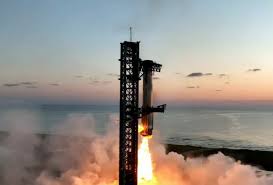
SpaceX has achieved a significant milestone in space exploration by landing its Starship rocket using an innovative structure called “Mechazilla.
- Mechazilla is the nickname for the large 400-ft rocket-catching structure at SpaceX’s Starbase.
- It features two enormous mechanical arms, often referred to as “chopsticks.” These arms are designed to catch the Super Heavy booster in midair as it returns to Earth.
- The SpaceX Starship rocket, along with its Super Heavy booster, launches from the ground.
- After reaching a certain altitude, the booster separates from the upper stage of the rocket.
- The booster begins descending back to Earth, using precision thrusters to control its path.
- As the booster nears the landing site, Mechazilla’s giant arms move into position.
- The booster hovers briefly before the arms catch it, ensuring a safe and controlled landing.
Swell waves:
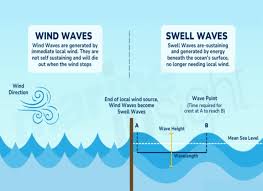
The Indian National Centre for Ocean Information Services (INCOIS) has issued extensive advisories for swell waves for Andaman and Nicobar and Lakshadweep as well as parts of coastal areas in Andhra, Goa, Gujarat, Kerala, Maharashtra, Odisha, Tamil Nadu, West Bengal, Daman and Diu, and Puducherry.
- Swell waves are also called Kallakkadal waves in India, which is a colloquial term used by Kerala fishermen to denote sudden waves that cause flash floods.
- INCOIS Hyderabad launched its swell surge forecast system in February 2020 to provide warnings for coastal populations in case of anticipated swell waves.
- Swell waves are long-wavelength ocean waves that travel away from their places of origin. They are usually created by windstorms or other weather systems. Sea waves otherwise are usually generated due to local winds.
- Windstorms and other powerful air current systems transfer energy from the air to water, making swell waves more powerful. Because of their high energy, swell waves are able to travel large distances and strike shores with considerably high power.
- According to INCOIS, swell waves organise themselves into groups of similar heights and periods, and then travel long distances without much change. Wave period is the time one wavelength takes to pass a specific point.
- Longer wavelengths, therefore, result in longer wave periods, and these characteristics are associated with faster and more powerful waves.
- A wave is essentially a transfer of energy from one point to another. Shorter waves dissipate more energy due to frequent movement, which is why they also lose energy quickly. Longer wavelengths are more powerful, and this is also why swells continue to persist days after they are formed.
- Kallakkadal waves inundate large areas of land.
- These waves are also sometimes confused with tsunami waves given their stealthy nature, but both are different.
- Kallakkadal waves are caused due to weather phenomenon, while tsunamis are mostly caused due to earthquakes or tectonic activity.
Nile River Basin Cooperative Framework Agreement:

The Nile River Basin Cooperative Framework Agreement (CFA) came into force on October 13, 2024, after over a decade of negotiations, aiming to promote equitable and sustainable use of the Nile’s water resources.
- The CFA replaces colonial agreements from 1929 and 1959 that gave Egypt veto powers over Nile usage.
- The CFA introduces Article 14b, ensuring no significant effect on water security for any Nile Basin State.
- Negotiated among nine Nile Basin countries (Burundi, DR Congo, Egypt, Ethiopia, Kenya, Rwanda, Sudan, Tanzania, Uganda) and later ratified by five nations (Burundi, Ethiopia, Rwanda, Tanzania, Uganda) and South Sudan acceded.
- Nations rejecting: Egypt and Sudan opposed the CFA, particularly Article 14b, citing concerns about water security.
World Health Organization Obtains $1 Billion Funding for Upcoming Years:
The World Health Organization secured $1 billion in pledges during a fundraising event in Berlin, marking a significant initiative to reform its funding model and enhance its ability to address global health emergencies. Pledge Breakdown New Contributions: $700 million in new pledges from European nations and philanthropies.
US Sends THAAD Missile Defense System to Israel:
United States has announced it will send the advanced THAAD missile defence system to Israel. This move is part of a broader strategy to bolster Israel’s defence capabilities and deter further aggression from Iran and other regional adversaries.
Union Minister Inaugurates Skill Training Institute in Visakhapatnam:
To address the immediate skill gaps in Andhra Pradesh, Shri Jayant Chaudhary, Union Minister of State (Independent Charge) for the Ministry of Skill Development and Entrepreneurship, and Minister of State for the Ministry of Education, Government of India, inaugurated a new National Skill Training Institute (NSTI) extension center at the Andhra Medical Tech Zone
Kerala Assembly Passes Resolution Against Waqf Amendment Bill:
The Kerala Assembly unanimously passed a resolution urging the BJP-led central government to withdraw the Waqf (Amendment) Bill 2024, which was introduced in the Lok Sabha in August and subsequently referred to a Joint Parliamentary Committee (JPC).
BEML Secures Contract for India’s First Indigenous Bullet Trains:
State-owned BEML has been awarded a contract worth ₹866.87 crore by Integral Coach Factory (ICF) to design, manufacture, and commission India’s first indigenously built bullet trains. This project marks a significant milestone in India’s high-speed rail journey, as it will feature two high-speed trainsets
e-Migrate Portal:
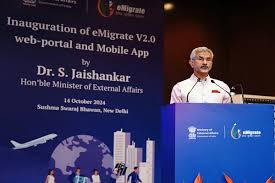
The Union External Affairs Minister and Labour and Employment Minister launched the updated e-Migrate portal and mobile app.
- e-Migrate Portal is an online platform launched by the Government of India to facilitate and manage the migration of Indian workers seeking employment abroad.
- It aims to provide a safe and transparent framework for migrant workers by offering various services, including information access, documentation, helpline support, integration with services and awareness campaigns
- It promotes safe and legal mobility channels for Indian migrants.
- The enhanced e-Migrate portal aligns with the United Nations’ Sustainable Development Goal 10, promoting orderly and responsible migration.
- The upgraded platform offers 24/7 multilingual helpline support and a feature for feedback, ensuring timely redressal of issues faced by workers abroad, especially in the Gulf region.
- The revamped system integrates with Digilocker, enabling secure, paperless document submission.
- Additionally, a partnership with Common Service Centres (CSCs) will expand immigration services to rural areas in local languages, enhancing accessibility.
- The platform also supports job-seekers by offering a one-stop marketplace for overseas employment opportunities.




